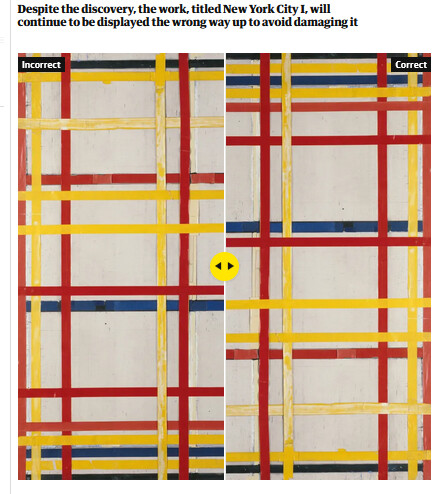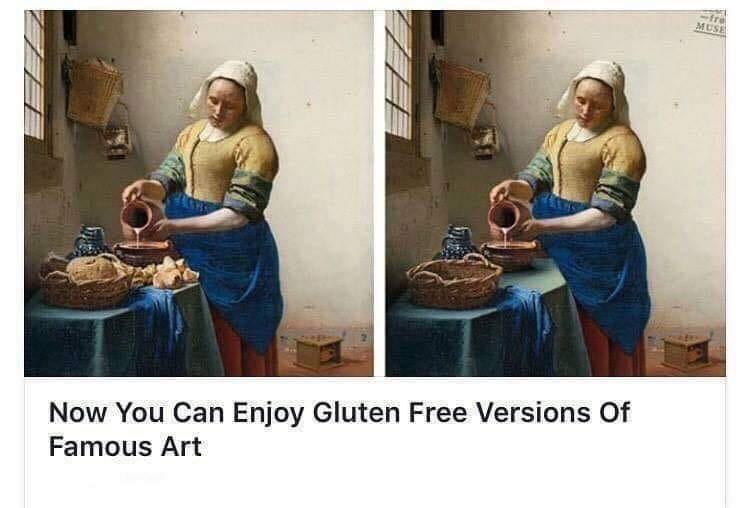https://www.survivefrance.com/t/2023-scam-warning/42528?u=susannah
Since writing fiction can be considered an art form, I thought this might belong here:
AI could turn writing from a serious craft into a cheap commodity. "……you’re going to end up with a lot of low-quality books”
Given today’s general level of articulacy, this is perhaps a market driven inevitability. ![]()
There is an older problem that’s come from the democratisation of publishing thanks to Amazon and the net, where no-one is rejecting poor work or editing moderately good stuff to make it excellent. The historical approach, even though it could be elitist and stifle innovation at times, did tend to keep the junk out more. I suspect this lowering of the expected standard will make AI writing much less obvious.
Some familiar notes for some (one ![]() )
)
And sometimes the phantasms of artificial intelligence can prompt, in the prompter, genuine emotion. The aging Havanese who stays under the desk as the experiments proceed will never again go to her favorite ocean. And, so, “A Havanese at six pm on an East Coast beach in the style of a Winslow Homer watercolor”:
It is, as simple appreciation used to say, almost like being there, almost like her being there. Our means in art are mixed, but our motives are nearly always memorial. We want to keep time from passing and our loves alive. The mechanical collision of kinds first startles our eyes and then softens our hearts. It’s the secret system of art.![]()
Thanks for posting that, particularly as I’ve been too busy writing to do much reading. However, I’d argue that the article, like the author’s uncompleted PhD is primarily about iconography, (ie. imagery rather than art). This is an increasingly common trope as more and more understandings of the world are gleaned from images on screens rather than direct phenomenological F2F experience of the actual work. could have written more, but it’s time for Réal Madrid v Barça - live TV football treat!
I agree with you about art/icon but the mawk in me just wanted to share the doggy ![]()
This is a very interesting, but seemingly complex article that I read over breakfast and digested over the course of the day while assembling and installing a modular spiral staircase (the latter with great difficulty!). I now need to reread it when my head is clear, because the article is so wide ranging, I have and always recommend Shiner’s The Invention of Art that is cited, and understand the Brillo Box references, which though not attributed, come from the US philosophy prof turned art critic, the late Arthur Danto (see Beyond the Brillo Box).
However I need to think further about the section on the transition from religious to secular in Renaissance art, as a few bits intuitively niggle, but OTOH, I may have misunderstood them. At the moment I’m struggling with the assertion that Renaissance art was wholly new, rather than in my opinion an aesthetic rediscovery of Greco-Roman classicism with the addition of a more sophisticated form of perspective than in previous times.
And then there’s the ‘copyright issue’, but I think that’s a whole other thread…
In the meantime, would welcome anyone else’s thoughts on the article or any part of it…
Probably the above will only interest a small handful of SFers, but if some others feels excluded, this post is no different to our techie colleagues’ discussion of equally arcane issues. Love to read them, but haven’t a clue what they’re talking about and defend would their right to talk about it, whatever ‘it’ is.
I have a sneaky feeling this whole issue is not really about art but about money to be made from art.
Blake Gopnik’s earlier article delves into how the decisions being made now could be retroactively be applied to artworks created earlier, say from the '60s, and Warhol’s famed screen print appropriations. He worries that creativity may be stifled.
Up until now there has been a reprieve enabling artists to appropriate and “transform”, however abstemiously, and profit by framing their work as a new ‘conversation’ in line with legal “fair use”.
Any re-user’s work, said the appellate judges, “must reasonably be perceived as embodying an entirely distinct artistic purpose, one that conveys a ‘new meaning or message’ ” — the judges are quoting from an earlier Supreme Court decision — “entirely separate from its source material.”
Fair enough. That’s just what happened when Warhol remade the Brillo company’s boxes: Once presented as art, in a gallery, they certainly had a new purpose and conveyed a new meaning and message compared to identical-looking boxes in a supermarket stockroom.
So, OK to use an original not designated as an art creation, say a urinal or a coat stand or a supermarket product, like Campbell’s soup, without worrying about copyright infringement.
The picture then gets complicated when the original, that has been appropriated, is in its own right a work of art.
An article talking about the same court case and its place in the art world
The history of art itself has also, to some extent, become an inexhaustible storehouse of resources where new artists search for and reuse the elements that best suit them at any given time. As such, says Cristina Garrido, “the role of the artist changes from being that of a manufacturer to a selector who, like a DJ, generates new meanings from found material.”
So, how did we arrive here in 2023, to a place where judges are to make decisions on when something is art and by whom? The law would never have been called in, probably, had there not been eye watering amounts of money involved.
In 2013, the Supreme Court overturned an earlier ruling and found in favour of a case brought against the appropriation artist Richard Prince. The judges decided that the artist had in “fair use” transformed 25 out of 30 photographs by Patrick Cariou by superimposing other personality heads and accessories. (The judges decided 5 photographs had not been transformed enough. So the definition of ‘transformation’ was left pivotal in law.)
In 2019 another a trial court decided that Warhol’s 1984 use of Goldsmith’s 1981 photo of the musician Prince was within the bounds of what copyright law calls “fair use.” Whether the public feels that screen printing a copied photograph and adding garish paint on top actually “transforms” an artwork is not what is in question. It is to what extent transformation changes one artwork into a new and different meaning and message, the original artwork remaining obvious because that reference is part of the point of the new transformation. There was precedent for this decision, a 1966 case brought against the then living Warhol by photographer Patricia Caulfield whose flower photograph Warhol appropriated without permission and then profited handsomely from selling in multiplicity. The case was settled financially out of court.
But times, and Supreme Court judges, are changing. Now the Supreme Court is retroactively reconsidering the 2021 ruling on the Warhol painting of Prince from the photograph taken by Goldsmith. How this 2023 ruling goes will set a precedent for further cases of art appropriation/copyright infringement. Asking for the law, judges, to determine the exact point at which an original artwork copyright is being infringed may be a step into oblivion. The US Supreme Court has waded in and lit a match.
People like to quote the words of the great Supreme Court Justice Oliver Wendell Holmes: “It would be a dangerous undertaking for persons trained only to the law to constitute themselves final judges of the worth of pictorial illustrations.”
Indeed.
One way to close this and still enable the creation of future ‘appropriation art’ is to ensure payment, appropriate to the value of the second creation, is paid to the creator of the original piece. A minor encumbrance for dealers, collectors and artists but considering that art is now in fact a commodity, there is no real reason to not share the wealth.
I would think this payment would be due based on the value of the artwork not only when it first appears in public, but each time it sells in the market a ‘royalty’ would be due commensurate with the augmented price, unless a contract had been earlier signed to waive further payments. For good measure, it might be wise for the judges to leave history as history and rule only on creations going forward rather than open a quagmire of never ending lawsuits.
I can see many contracts being required and yet more regular income for art lawyers.
![]()
![]()
![]()
I don’t feel qualified to comment on paintings, but music is more my thing… so I was interested to see this recently.
Abstract We introduce MusicLM, a model generating high-fidelity music from text descriptions such as “a calming violin melody backed by a distorted guitar riff” . MusicLM casts the process of conditional music generation as a hierarchical sequence-to-sequence modeling task, and it generates music at 24 kHz that remains consistent over several minutes. Our experiments show that MusicLM outperforms previous systems both in audio quality and adherence to the text description. Moreover, we demonstrate that MusicLM can be conditioned on both text and a melody in that it can transform whistled and hummed melodies according to the style described in a text caption. To support future research, we publicly release MusicCaps, a dataset composed of 5.5k music-text pairs, with rich text descriptions provided by human experts.
Since the introduction of MIDI 40 odd years ago, it’s been easy to call yourself a musician without being able to play an instrument. More recently, VSTs can generate chord progressions or arpeggios that are always in key, and so I see AI-generated music as kind of an extension of that. I don’t think Ed Sheeran has anything to worry about just yet ![]()
AI in music’s an interesting one. Computer generated stuff is everywhere already. I use a thing called Drummer with Apple Logic Pro X. It gives you a number of fictitious ‘session drummers’ who play in different styles. You can change a lot of parameters and even have it play to the rhythm of another track. I generally lock it to the bass track. The results are quite uncanny. I doubt a casual listener would realise it was a robot. But for sure, you do need some human input to make it really musical. As for electric guitars, I’ve a virtual instrument called Session Guitar Sunburst Deluxe. A Kontakt instrument and no strumming required! Just choose or configure your strumming patterns and play your midi keyboard. Fantastic toy!
I have a Digitech pedal a bit like that, based on their 'band ina box ’ software. Play in the chords for the song and you get bass and drums in the right key and tempo. It’s not quite as good as that sounds, but it is a useful practice tool.
It’s a great time to be a musician, isn’t it? I basically have a highly equipped recording studio on my laptop, in the spare room. Hoping for a dedicated, acoustically treated space when we move!
Music tech has been amazing for a long time now. Sadly I’ve reached the stage where there just isn’t enough energy to do it properly these days.
Not an attempt to steer the thread away from music and back to visual culture, I’ve just read the linked article and it raises a lot of things that many others might find interesting.
Unlike AI generated art or music, this programme generates a design solution, then stress tests it and refines the design accordingly and tests it again. Thus each iteration is an improvement on the previous one and the design can be refined over and over again, and prototyped many times faster than by traditional dialogue between scientists, designers and engineers.
I don’t think it’s a coincidence that the solutions have a biomorphic appearance as natural structures were similarly refined by evolution. The organic forms also evoke H R Giger’s designs for the Alien films
I call to mind the recent report of a painting by Mondrian which has been upside down for the past 75 years

Is the one the ‘correct’ way up art and the other not?
Depends whether ‘correct’ means in accordance with the artist’s intentions and expectations. That’s my idea of ‘correct’.
However, presumably it was hung upside down because there wasn’t any indication of the back, It must also have been unsigned, which probably means it wasn’t hung, or publicly exhibited during the artist’s lifetime. So the gallery made guessed wrong and in my opinion should correct their error. Find their excuse slightly odd because they must have added whatever it’s hung with so why can’t the hanging be reversed- - if the stretcher is so damaged it surely already needs replacing or reinforcing.
Quite right @DrMarkH , unsigned and apparently unfinished. They have decided to leave it upside down, saying “That is now part of its story”. OK. I expect a lot of viewers to the gallery bending over to see it the reverse way up. I think Piet Mondrian would have enjoyed the joke.
Not quite the first time
I expect there are more…
To be honest, to my eyes the Mondrian New York piece seems to have more three dimensional depth with the thicker stripes on top.
I remember an Adolph Gottlieb being reproduced upside down in an Open University textbook, but given many OU art historians’ dislike of non-representational American art (particularly Ab Ex) this isn’t wholly surprising;

